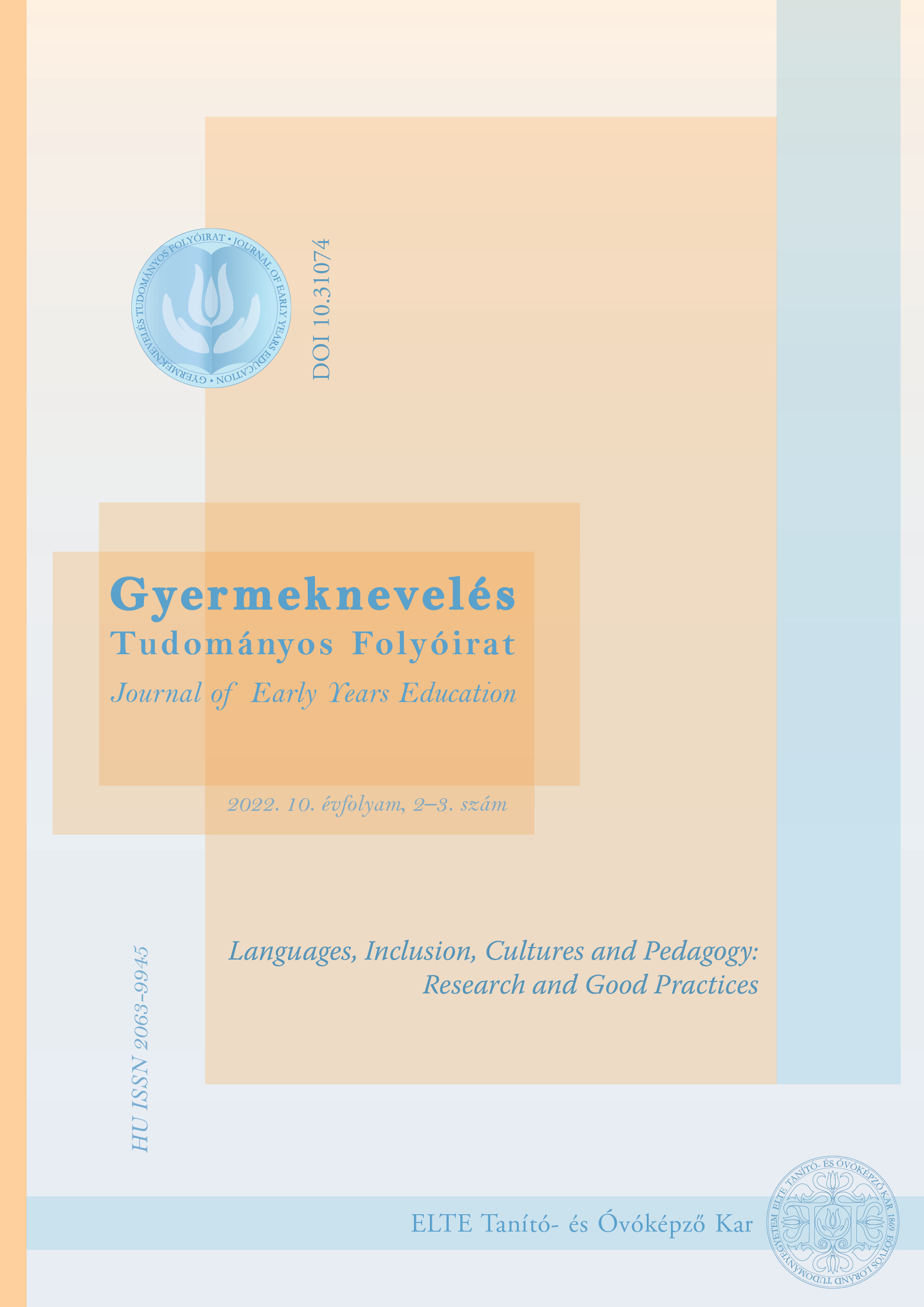The population features of visually impaired children aged between 0 and 14 in Hungary
DOI:
https://doi.org/10.31074/gyntf.2022.3.246.258Kulcsszavak:
visual impaired children, age-related prevalence of VI children in Hungary, ophthalmologist diagnoses, chronic diseases among blind and low vision children, associated disabilities of VI childrenAbsztrakt
This paper focuses on the crucial features of the healthcare and pedagogical services provided for 1,432 visually impaired (VI) children aged 0–14 who participated in an exploratory research project conducted between 2014 and 2019. In order to explore the population characteristics of visually impaired children in Hungary, the paper relies on two major data sources: the census data of the Hungarian Central Statistical Office between 1990-2016, and the examination documents of the Corps of Pedagogical Services of Visually Impaired Children from 2009 to 2013. The following data were analysed: the ratio of blind and low vision children in the various phases of special and majority educational institutions; the frequency of premature birth among blind and low vision children in relation to gestational weeks; the frequency of ophthalmologist diagnoses among groups of VI children; the frequency of ophthalmologist diagnoses among groups of VI children; associated disabilities of VI children. The results suggest that the population of visually impaired children is under transformation: visually impaired groups based on the classical interpretation of visual performance are being replaced by new groups governed by needs.
Letöltések
Hivatkozások
Balla, G. & Szabó, M. (2013). Chronic morbidities of premature newborns. Orvosi Hetilap, 154(38), 1498–1511. https://doi.org/10.1556/OH.2013.29709
KSH – Hungarian Central Statistical Office 1990 (1993). Demographics. In Nagy, O. (Ed.), 1990 Census, 27. Demographics, Volume I. (pp. 33–39; 48–56; 126–135; 257–262). KSH.
KSH – Hungarian Central Statistical Office 2001, 2011 (2011). Retrospective and detailed data on people with disabilities. In Csordás, G. (Ed.), 2011 Census, 11. People with Disabilities (pp. 5–21). KSH. www.ksh.hu/docs/hun/xftp/idoszaki/nepsz2011/nepsz_11_2011.pdf
KSH – Hungarian Central Statistical Office 2016 (2016). Lakatos, M. History of Hungarian microcensuses and the 2016 microcensus. In Németh, Zs. (Ed.) Microcensus 2016. Topics of the 2016 microcensus, Background studies on the microcensus program and topics (pp. 6–44). KSH. www.ksh.hu/docs/hun/xftp/idoszaki/
mikrocenzus2016/mikrocenzus_2016_1.pdf
KSH – Hungarian Central Statistical Office 2018 (2018). Disabled population in Hungary, Methodological notes. In Janák, K. & Tokaji, K. (Eds.), Microcensus 2016, VIII. Characteristics of the population with disabilities and limited health reasons (pp. 4–10; 29–31). KSH. www.ksh.hu/docs/hun/xftp/idoszaki/mikrocenzus2016/mikrocenzus_2016_8.pdf
Gilbert, C. E. & Ellwein, L. B. (2008). Prevalence and causes of functional low vision in school-age children: results from standardized population-based surveys in Asia, Africa, and Latin America. Investigative Ophthalmology & Visual Science, 49(3), 877–881. https://doi.org/10.1167/iovs.07-0973
Iapb Vision Atlas (2021). Magnitude and Projections. https://www.iapb.org/learn/vision-atlas/magnitude-and-projections/ Kiss, E. & Pajor, E. (2020). The Medical and Pedagogical Features of the Population of Visually Impaired Children Aged Between 0 and 14 in Hungary. Ophthalmologia Hungarica, 157(3), 294–302.
Krähling, K. (2017). Az agyi eredetű látássérült gyermekek magyarországi ellátó-rendszerének rövid áttekintése. MA-thesis. ELTE BGGYK.
KSH – MAGYARORSZÁG (2014). https://www.ksh.hu/docs/hun/xftp/idoszaki/mo/mo2014.pdf KSH – MAGYARORSZÁG (2018). https://www.ksh.hu/docs/hun/xftp/idoszaki/mo/mo2018.pdf Nagy, A., Beke, A. M., Gráf, R. & Kalmár, M. (2017). Development and its predictive factors in extremely low birth weight infants. Applied Psychology, 17(3), 37–56.
Németh, J., Frigyik, A., Vastag, O., Göcze, P., Pető, T. & Elek, I. (2005). Causes of blindness in Hungary between 1996 and 2000. Ophthalmologia Hungarica, 142(3), 127–133.
Paraszkay, S. (2007). Közelről nézve a gyengénlátó gyermek. Gyengénlátók Általános Iskolája EGYMI és Diákotthona.
Philip, S. S. & Dutton, G.. N. (2014). Identifying and characterising cerebral visual impairment in children: A review. Clinical & Experimental Ophthalmology, 97(3), 196–208. https://doi.org/10.1111/cxo.12155
Prónay, B. (2004). Investigation of Verbal Intelligence of Blind Children. Application of the Hungarian Wechsler Test for Children. Hungarian Psychologycal Review, 59(1), 57–75.
The Educational Authority (2020). https://www.oktatas.hu/kozneveles/kerettantervek/2020_nat/iranyelvek_alapprogramok
WHO = WORLD HEALTH ORGANIZATION (2020). Blindness And Vision Impairment. https://www.who.int/news-room/fact-sheets/detail/blindness-and-visual-impairment
WHO = WORLD HEALTH ORGANIZATION (2021). Blindness And Vision Impairment. https://www.who.int/news-room/fact-sheets/detail/blindness-and-visual-impairment
##submission.additionalFiles##
Megjelent
Hogyan kell idézni
Folyóiratszám
Rovat
License
Copyright (c) 2022 Szerző

This work is licensed under a Creative Commons Attribution-NonCommercial-ShareAlike 4.0 International License.

